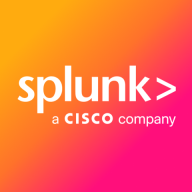

Splunk AppDynamics and Apica compete in the application performance monitoring and synthetic monitoring markets. AppDynamics seems to have the upper hand in detailed stack trace analysis and comprehensive application behavior insights, while Apica leads in flexibility and broad protocol support for synthetic monitoring.
Features: Splunk AppDynamics excels with features such as detailed stack trace analysis, JVM memory monitoring, and transactional awareness. It provides proactive alerting and application behavior insights, essential for debugging and optimization. Apica focuses on synthetic monitoring and load testing with broad protocol support. Its strong scripting capability allows for robust browser simulation and handling of complex scenarios, ideal for preemptive action against outages.
Room for Improvement: Splunk AppDynamics users point out challenges with user interface navigability, license management complexity, and a need for improved alerting mechanisms, dashboard creation, and mobile-friendly interfaces. Better cloud integration and a more flexible pricing model are also desired. Apica users request enhancements in alert accuracy during complex monitoring tasks and a more intuitive dashboard configuration. Improvements in API access and third-party application integrations are also suggested.
Ease of Deployment and Customer Service: Splunk AppDynamics supports deployment in hybrid, public, private cloud environments, and on-premises, with highly rated customer service and technical support. Apica also supports hybrid and cloud environments, receiving positive customer service feedback, though some users note initial setup complexities compared to AppDynamics.
Pricing and ROI: Splunk AppDynamics is viewed as a premium product with a high pricing perception, especially with added analytics or real-user monitoring modules. Users report significant ROI through enhanced application visibility and performance improvements, recommending it for larger enterprises due to its cost structure. Apica offers a midrange pricing model, considered cost-effective for synthetic and load test monitoring, meeting budget constraints while providing good value per price.
Overall, as a production gatekeeper, we achieve at least 50% efficiency immediately, with potential savings ranging from 60 to 70% as well, reinforcing why it is a popular tool in the banking industry.
According to errors, exceptions, and code-level details related to their application performance on a daily basis, the application development team tries to help with Splunk AppDynamics to reduce errors and exceptions, which helps the end users get application availability and feel more confident.
To understand the magnitude of it, when the company asked to replace Splunk AppDynamics with another tool, I indicated that for the proposed tool, we would need five people to do the analysis that Splunk AppDynamics enables me to do.
AppDynamics is much more helpful.
We got a contact, an account manager, to work directly with for technical support.
They help us resolve any issues raised by our team relating to operations, application instrumentation, or any other issues.
APICa is scalable.
We have reached maximum capacity in our tier, and extending capacity has not been cost-effective from Splunk's perspective.
I would rate the scalability of Splunk AppDynamics as a nine out of ten.
I assess how Splunk AppDynamics scales with the growing needs of my organization as good, since we are growing and adding more servers.
It is necessary to conduct appropriate testing before deploying them in production to prevent potential outages.
There are no issues or bugs with the 20.4 version; it is very stable with no functionality or operational issues.
Splunk AppDynamics is superior to any alternative, including Dynatrace.
When editing scripts, only one can be accessed at a time, risking changes affecting other folders.
Splunk AppDynamics does not support the complete MELT framework, which includes metrics, events, logging, and tracing for the entire stack.
If AppDynamics could develop a means to monitor without an agent, it could significantly improve application performance and reduce potential problems.
A good integration with Splunk would be very interesting, as Splunk is a good product for logs, and that part is currently missing in Splunk AppDynamics.
We completed a three-year deal for Splunk and for AppDynamics, which costs millions of dollars.
Customers have to pay a premium price, however, they receive considerable value from the product.
All these solutions at the moment are cheap, but it is like paying for insurance; you pay insurance to avoid major damage.
It is useful for both performance and automation testing, facilitating access to headers and payloads easily, enhancing scripts with dynamic values.
We have multiple tools, but end users prefer to use Splunk AppDynamics because their portal navigation is very simple and clear.
The real user monitoring and digital experience monitoring effectively track actual user experience with the applications, including page loading, interaction time for both desktop and mobile applications.
This is the best feature because, although you can't monitor a whole application at once, Splunk AppDynamics gives you the option that if there is any failure—simple failure regarding anything set up as per our use cases—you will get an alert.
| Product | Market Share (%) |
|---|---|
| Splunk AppDynamics | 4.1% |
| Apica | 0.5% |
| Other | 95.4% |


| Company Size | Count |
|---|---|
| Small Business | 4 |
| Midsize Enterprise | 2 |
| Large Enterprise | 17 |
| Company Size | Count |
|---|---|
| Small Business | 55 |
| Midsize Enterprise | 36 |
| Large Enterprise | 189 |
Apica leads in observability cost optimization, empowering IT teams to manage telemetry data economics efficiently. It supports various data types, reducing costs by 40% with flexible deployment options and eliminating tool sprawl through modular solutions.
Apica Ascent optimizes observability costs across metrics, logs, traces, and events and provides adaptability beyond proprietary formats. Its patented InstaStore™ technology ensures maximum storage efficiency and advanced root cause analysis. Organizations leverage Apica for comprehensive control over observability investments, reducing runaway costs. With solutions for mitigating high-cardinality data challenges, Apica supports any data lake preference and offers cloud or on-premises deployments. Its modular solutions eliminate unnecessary tool redundancies, enhancing economic efficiency in telemetry data management.
What features define Apica's capabilities?Apica addresses industry needs in monitoring and testing applications, enhancing user experience across sectors. It is instrumental in synthetic checks, load testing, API monitoring, and validating functionalities for stability in gaming, finance, eCommerce, and banking platforms. Apica's versatility supports both on-premises and cloud environments, ensuring accurate insights into service availability and network performance.
Splunk AppDynamics enhances application performance monitoring with advanced diagnostics and real-time insights, offering seamless end-to-end transaction tracking and infrastructure visibility.
AppDynamics provides critical tools for businesses to analyze application behavior and performance. Through innovative features like transaction snapshot analysis and adaptable dashboards, users can quickly identify and address issues, ensuring high levels of system uptime and efficiency. It is designed to support complex environments including Kubernetes and AWS, enhancing user experience by detecting performance issues early. Despite needing improvements in network monitoring and integration, it remains a robust option for tracking application health.
What are the key features of AppDynamics?In industries like financial services and e-commerce, AppDynamics facilitates performance tracking across distributed systems, optimizing infrastructure to meet consumer demands. It excels in environments needing precise transaction monitoring and is pivotal in delivering high value and satisfaction.
We monitor all Application Performance Monitoring (APM) and Observability reviews to prevent fraudulent reviews and keep review quality high. We do not post reviews by company employees or direct competitors. We validate each review for authenticity via cross-reference with LinkedIn, and personal follow-up with the reviewer when necessary.